2016 Summer Research Grant Awardees
The Office of Research and Graduate Programs is pleased to celebrate these Summer Research Fellowships and Research Support Grant recipients:
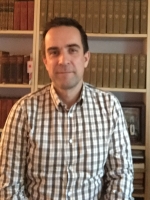
Dr. Adriano Duque
Department of Romance Languages and Literatures
College of Liberal Arts and Sciences
USG: Shared Saint Veneration Among Muslims and Christians in 10th Century Spain
My research focuses on Al-Andalus’s effort to re-invent itself on the international stage through the use of orthodox ideals, shared, and local connections. This includes the Umayyad ruler’s relationship with North-African leaders, religious scholars, Christians Kings. This work aims to give a new perspective on studies of religion and Christian- Arab relations by focusing on inter and intra-imperial relations in the context of Al- Andalus, political strife in North Africa, and the shift form "old" to "new" models of religious identity in the Iberian Peninsula between the 10th and 15th centuries.
At the heart of my project is a reevaluation of the conventional view of a defensive and inwardly looking Islamic rule in the Iberian Peninsula. By focusing on rituals of shared veneration in Spain and North Africa, I hope to show how Islamic rulers where engaged in a pluralistic religious strategy along the Christian frontier.
With help from the Summer Research Fellowship institute, I will expend on previous research by investigating the rituals of shared veneration that were the driving force behind Islamic rule in the Iberian peninsula, caught as they were between multiple identity currents during a fast-changing political and sociological reality in the Middle Ages.
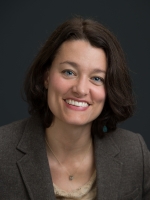
Dr. Aimee Eggler
Department of Chemistry
College of Liberal Arts and Sciences
USG: Toward the Development of Therapeutics or Disease Prevention: Defining the Importance and Role of Reactive Oxygen Species in Activation of Nrf2 and its Target Genes by Redox-cycling Compounds
Eighty-six percent of the United States’ health care costs are devoted to treatment of chronic diseases including cancer, heart disease, diabetes, and neurodegenerative diseases. Notably, each of these disease states is prevented or mitigated by activation of the human Nrf2 transcription factor protein. Nrf2 can be activated by various stresses, as well as by an extensive list of small molecules, many of which are found in commonly consumed foods or traditional medicines from plant sources. The long-term goal of my research group is to understand how these small molecules activate Nrf2, in order to assist in the development of therapeutics to prevent or mitigate these chronic disease conditions. Toward this goal, we are investigating the relative importance of two distinct chemical aspects of these small molecules. Each of these aspects could help promote activation of Nrf2 and the genes it controls, which help prevent protect cells against stresses. The first aspect is the “electrophilic nature” of the molecules, in other words, their affinity for electron rich molecules. This characteristic allows them to inactivate the repressor of Nrf2, Keap1. The other less understood characteristic is an ability to generate reactive oxygen species in the cell. Our preliminary data suggest this aspect plays an important supporting role. We aim to better understand this latter characteristic and hopefully utilize it to design more effective therapeutics for the prevention of chronic diseases.
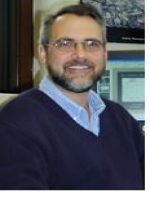
Dr. Charles Folk
Department of Psychology
College of Liberal Arts and Sciences
USG: Exploring the Effects of Reward History on Attentional Capture Using Event Related Potentials
Our perceptual experience of the world depends heavily on how our attention is allocated to objects and locations. For example, the failure to shift attention to important environmental information can have dire consequences, such as TSA officer failing to notice a weapon in a luggage x-ray scan. Normally, we voluntarily shift our attention to those events relevant to our goals. However, in addition to these voluntary shifts of attention, salient events (e.g., abrupt flashes, unexpected movement, etc.) can result in the involuntary “capture” of attention. This can be useful if the event is important to our goals (e.g., a flashing “don’t walk” sign), but can be distracting if the event is irrelevant (e.g., a flashing billboard on the side of the road). Research from my laboratory, however, supports a theoretical model of attention allocation known as Contingent Attentional Capture, according to which the capture of attention by a salient event is contingent on whether the event carries properties that are consistent with current “top- down” goals. Thus, a flashing “don’t walk” sign will only capture attention if one has established a goal of looking for flashing objects. However, recent studies have suggested that stimuli previously associated with monetary reward are capable of capturing attention even if they do not share features with the target. I am requesting a USG to explore whether these recent results truly represent purely involuntary shifts of spatial attention by using both behavioral data as well as measures of brain activity as recorded through an electroencephalogram (EEG).
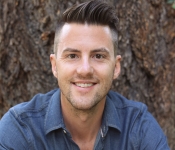
Dr. Travis Foster
Department of English
College of Liberal Arts and Sciences
USG: Forming Attachments: Civil War Genres and the Color Line
If the U.S. Civil War threw white supremacy into some disarray, North-South white reunion led to its thoroughgoing re-instantiation, replacing slavery with segregation, disenfranchisement, lynching, and mass incarceration. In my book manuscript, Civil War Genres and the Color Line, I reveal the ways that literature participated in this process, describing how newly popular genres such as the campus novel and the gospel sermon emerged within shifting patterns in American race relations. The campus novel, for instance, worked to make white nationalist belonging feel inevitable and desirable for whites across sectional, ethnic, and class difference. Meanwhile, gospel sermons enabled African American worshipers to enact freedom as a radical departure from white supremacy’s narrow prescriptions for black personhood. In each chapter, I focus not only on the conventions binding dozens of popular texts into influential genres but also on the methodological assumptions that typically underwrite literary history, thinking in particular about what we learn when we highlight the ordinary rather than the exceptional. My principal aim this summer will be to research and write the manuscript’s introduction, which will situate the project within, first, literary historical work on the Civil War and race, and, second, literary theoretical work on genre, history, and conventionality.
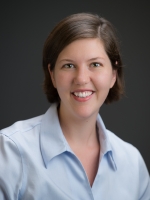
Dr. Kathryn Haymaker
Department of Mathematics and Statistics
College of Liberal Arts and Sciences
USG: Error-correcting Codes for High-Density Storage Applications
An increasing amount of public and private data is being stored remotely, in both cloud storage applications and social media websites. When data is transmitted and stored, error-correcting codes are used to recover the information in the presence of noise.
However, classical code constructions may not satisfy the new constraints imposed by modern storage applications. This project focuses on designing and analyzing new mathematical constructions of codes for both flash memory and magnetic media storage.
The work proposed here will provide new capacity bounds and code constructions for two modern storage channels. The first channel provides a model of a proposed high- density implementation of magnetic media in which the errors caused by the channel are partly data-dependent. Previous work has shown that this channel requires a combinatorial approach to refine bounds and design efficient error-correcting codes. The second storage channel model is a variation of a classical non-binary erasure channel, called the partial erasure channel. In this model, a partially erased symbol is replaced with a subset of possible values. New code constructions and decoding approaches have the potential to improve upon existing error-correcting codes in both of these cases, since there is more information present in the channel model than in the traditional setting. The goals of this project are to design new code constructions and to refine bounds on these storage channels. We will then provide a comparison and analysis focusing on the code rate and decoding efficiency.
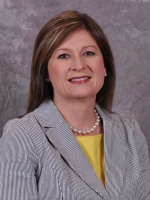
Dr. Tamara Kear
College of Nursing
USG: Investigating Hand-off Communication in Nephrology Nursing Practice Settings
Patient safety and patient safety culture form the foundation of excellent health care delivery, but achieving patient safety and creating positive patient safety cultures requires ongoing, focused efforts of every member of the healthcare team. It has been estimated that 80 percent of serious medical errors involve miscommunication during the hand-off/handover between healthcare providers. Using a cross sectional descriptive survey design that includes closed and open- ended questions, this research project will gather detailed insight on the process of hand-off in nephrology nurse practice settings across the U.S. with the future goal of developing a Hand-off Tool Kit for Nephrology Nurses. Select tool items from the Agency for Healthcare Research and Quality assessment tools (Hospital Survey on Patient Safety Culture and the Medical Office Survey on Patient Safety Culture) and Joint Commission’s Center for Transforming Healthcare’s Hand-off Communication tool will be used and adapted to address the uniqueness of nephrology practice settings This survey will be made available electronically using SurveyMonkey®, an online survey company providing safe and encrypted data collection, and sent to all members of the American Nephrology Nurses’ Association through the Listserv. Electronic data collection will occur over a one-month period of time. Descriptive statistics including frequencies and means will be reported for all the items in the survey and compared with published data. A content analysis approach will be utilized to analyze the qualitative data to identify common subthemes and themes.

Dr. Edward Kim
Department of Computing Sciences
College of Liberal Arts and Sciences
USG: Digital Pathology Annotation Data for Improved Deep Neural Network Classification
New big data machine learning methodologies have emerged i.e. deep learning through convolutional neural networks, that have demonstrated great success over previous machine learning techniques. The application of this technology could be transformative to the medical imaging community; however, training these neural networks requires massive amounts of labeled training data that do not exist for many medical imaging tasks. Obtaining expert annotation data at the cellular level (counting nuclei, measuring shape of cells, etc. ) is one the principle challenges in the field of digital pathology where a single biopsy digitized at 40x resolution can contain 2.5-4 billion pixels of data. To put this into context, one digitized biopsy contains more than 800 cellphone pictures captured at 5 megapixels, or 30 times more information than an entire 3D body radiological CT scan. This problem is multiplied by the tens of millions of biopsies performed every year in the United States.
The goal of this project is to develop an interactive, crowdsourcing web tool whose core mechanic involves the identification and delineation of certain cellular morphological features. An important goal of this tool is to be designed so that a user does not need to have any medical background knowledge in order to positively contribute to the analysis of anonymized cytological and histological images. The data collected can then be used to train data-intensive classification models of cancer and its variants.

Dr. Adam Langley
Department of Biology
College of Liberal Arts and Sciences
USG: Using ‘Microbial Cages’ to Link Soil Microbial Community Potential to Soil Function
Even though it is widely recognized that soil microbes are responsible for carrying out the decay of organic matter in ecosystems, there remains very little evidence that the functional potential of soil microbial communities differs meaningfully between sites. That is, you could take a pinch of soil from a rainforest or a desert and, in the same environment, the microbes would behave the same because soil microbes are so numerous, diverse, adaptable and redundant in function. However, owing to methodological hurdles, the importance of microbial communities has not been adequately tested in realistic systems. Herein, I propose to develop a method that will afford an unprecedented ability to manipulate realistic microbial communities and assess their function in actual ecosystems. My group’s preliminary lab-based study suggests that decomposition deep in wetland soils could be limited by the availability of microbial inocula-- this could be one case in a natural ecosystem wherein the identity of soil microbes, and not just the environmental conditions, controls what happens in that soil. But, we need to test this in a realistic soil environment and not just in the lab. By deploying “microbial cages” we will be able to determine the importance of microbial community for decomposition rates in the field for the first time. This funding will support the work of one undergraduate over the summer, supplies to develop the cages and molecular analyses of microbial identities.

Dr. Crystal Lucky
Department of English
College of Liberal Arts and Sciences
USG: "In that Moment, Lost or Saved": Black Women and the Holy Ghost in African American Literature
During the summer 2016, I will be revising and preparing for publication my essay “’In that moment, lost or saved’: Black Women and the Holy Ghost in African American Literature.” The essay is a part of my current book project, On the Threshing Floor: The Image of African American Women’s Piety in the Nineteenth and Twentieth
Century. Both the essay and the book argue that piety has been linked in the cultural imagination to black American women from at least as early as the eighteenth century, beginning with poet Phillis Wheatley. Throughout the nineteenth and twentieth century, the pious black woman, whom I define as both an historical and a cultural figure dedicated to enacting and promoting the tenets of Protestant Christianity, appeared in autobiographical and expository writing, fiction, poetry and visual images, specifically paintings, lithographs, photographs, film and television. One aspect of that image is the black pious woman’s relationship with and influence under the Holy Ghost: how she responds to His power and manifests His presence in her life and activities and how that representation changes depending upon the disparate purposes of its creators, female and male, black and white. The essay analyzes the image of black female piety in three major African American texts -- Nella Larsen's Quicksand (1928), Richard Wright's Native Son (1940) and Ralph Ellison's Invisible Man (1952) -- to consider the ways important and ubiquitous literary representations of the black pious woman contradict her self-definition in autobiographical writing that focuses on the spiritual conversion, preaching and prayer experiences.
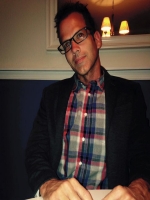
Dr. Patrick Markey
Department of Psychology
College of Liberal Arts and Sciences
USG: Violent Video Games and Youth-related Violent Crime
Violent video games have often been linked to horrific acts of violence. The reason some have made this connection is that various correlational, experimental, and longitudinal studies have found that video games habits are related with aggressive behavior. However, one major limitation of these studies is that they operationalize “aggressive behavior” using either proxy assessments of aggression (e.g., subjecting another person to an unpleasant noise) or self-reports of aggressive feelings. To overcome this issue, our lab previously examined the relationship between sales of violent video games and changes in violent crime among adults in the United States. Contrary to the claims that violent video games are linked to violence, no evidence was found to suggest that this medium was positively related to aggravated assaults or homicides. Unexpectedly, the results were suggestive of a decrease in violent crime in response to violent video games. In response to this study, other scholars pointed out that such research is limited because it only focused on adults and not violence among youths. Indeed, many professional organizations have acknowledged that youths are especially vulnerable to the effects of violent media, and that violent media might have a particular effect on the use of firearms by adolescents. The proposed study seeks to extend these findings by examining violent gun crime committed by youths. As in our previous research, four time series analyses will be conducted to investigate the relationship between various assessments of violent video game habits and violent crime among youth in the United States.

Dr. Whitney Martinko
Department of History
College of Liberal Arts and Sciences
USG: Public Places, Private Profit: Debates over the Preservation of Historic Sites in the Early United States, 1785-1860
This project examines the intellectual and material development of what early Americans themselves called preservation of historic sites in the early United States. It draws together scholarship from the fields of architectural history and cultural landscape studies with historians' revived interests in the cultural dimensions of capitalism and market society to examine debates over sites like indigenous earthworks, colonial churches and statehouses, and the houses of celebrated citizens. It shows how ideas and practices of preservation emerged with the nation as a way to work out a moral principle of republican real estate management, attendant to the so-called common welfare, in a political economy and legal system that increasingly defined land and buildings as capital and favored individual rights to develop them. In analyzing these claims with a critical eye, this study shows how proponents used these arguments to garner political and financial gain for themselves. As advocates of preservation professedly put limits on the bounds of the competitive market economy of land, they also defined preservation as a practice that denied more radical calls for property reform, such as land redistribution and the elimination of inheritance. This study reframes the founding of the Mount Vernon Ladies' Association in the 1850s as the outgrowth of these longstanding debates over property, profit, and preservation, not the birth of the preservation movement whole cloth.

Dr. Ruth McDermott-Levy
College of Nursing
USG: Environmental Health Education Resources for Residents of Wyoming County, PA
This is Phase II of a community based participatory research project. Phase I investigated the environmental health concerns of Wyoming County, PA residents and their preferred methods of receiving health information
(McDermott-Levy & Garcia, in review). Health concerns identified included stress related to residents’ changing community as a result of gas development and air and water quality. Other concerns related to misinformation received about routine environmental health risks such as water testing and residential radon.
Web-based educational programs with downloadable print materials to bridge the knowledge gaps of residents were recommended by community members.
Previous research related to the health impacts for unconventional natural gas development (UNGD) has identified environmental health risks. However, there are no studies that identify the most effective way to promote knowledge and health protective actions related to environmental health risks in UNGD communities. Phase II will quantitatively and qualitatively identify useful environmental health education tools for communities undergoing UNGD. The tools will be evaluated by Wyoming County residents and other stakeholders (official health and environmental organizations and experts in health impacts of UNGD). The research question for this project is: what are the most accurate and effective environmental health educational materials to address knowledge gaps and health protective action related to air and water quality and stress for residents of Wyoming County, PA?

Dr. Allison Payne
Department of Sociology and Criminology
College of Liberal Arts and Sciences
USG: Bullying Victimization in Schools: Prevalence, Predictors, and Consequences
Bullying Victimization in Schools: Prevalence, Predictors, and Consequences Bullying victimization has been a longstanding problem among adolescents in school and occurs when an individual “is exposed, repeatedly and over time, to negative
actions on the part of one or more other persons, and he or she has difficulty defending himself or herself” (Olweus 1991 p. 47). Harassment that occurs when students are bullied in person by their peers is often referred to as interpersonal bullying; this can include both direct bullying, such as hitting, and indirect bullying, such as spreading rumors. In recent years, rapidly developing technologies have allowed for bullying to expand into cyberspace. Little research has examined cyberbullying, which can be defined as “willful and repeated harm inflicted through the medium of electronic text” (Patchin & Hinduja 2006 p. 152) and can also involve both direct behaviors, such as hurtful messages transmitted directly from the bully to the victim, and indirect behaviors, such as rumors spread through an online forum. Although bullying victimization impacts each student differently, an immediate and influential negative consequence often seen is the avoidance of places or activities in school due to fear of attack or harm. This project uses a large nationally representative data set to compare and contrast the prevalence and predictors of interpersonal bullying and cyberbullying victimization as well as to explore the relationship between school avoidance and bullying victimization (both interpersonal and cyber), including an analysis of factors that may aggravate or mitigate this relationship.
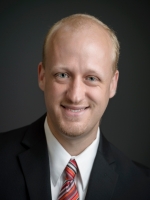
Dr. Benjamin Sach
Department of Psychology
College of Liberal Arts and Sciences
USG: Examining the Effects of Brain Serotonin Deficiency on Obsessive-Compulsive-Like Behavior
Serotonin deficiency has long been hypothesized to contribute to the development of numerous psychiatric disorders, including major depression and obsessive compulsive disorder (OCD), but whether low levels of brain serotonin actually cause the symptoms of these disorders remains largely unknown. Although measuring and manipulating the levels of brain serotonin in humans is unfeasible, investigations of the behavioral and neuronal consequences of serotonin deficiency can be performed through the use of genetically modified mice. Indeed, mice with low levels of brain serotonin have been reported to exhibit several behavioral disturbances that would be consistent with compulsive-like behavior. The first aim of this Summer Research Grant is extend these prior findings by more completely characterizing the extent to which a particular genetically engineered mouse model of brain serotonin deficiency (i.e., the tryptophan hydroxylase 2 R439H knock-in mouse line) displays a behavioral profile that mimics the behavioral abnormalities observed in patients with OCD. The second aim of this grant will involve evaluating the cellular and molecular consequences of brain serotonin deficiency within a particular neural circuit (i.e., the cortico-striatal-thalamocortical circuit) that is widely believed to be dysregulated in individuals with OCD. Through the performance of these two aims, we will establish the relevance of serotonin-deficient mice as a preclinical model of OCD, and we will gain insight into the mechanisms through which low levels of brain serotonin could influence the activity of the cortico- striatal-thalamocortical circuit, thereby leading to behavioral disturbances relevant to OCD.
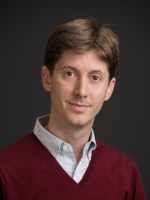
Dr. Andrew Scott
Department of Classical Studies
College of Liberal Arts and Sciences
USG: Out of the Dust and Slaughter:
Reconsidering Cassius Dio's Contemporary History
My project seeks to reconsider the work of Cassius Dio, a Roman senator and Greek- speaking native of Asia Minor who composed a comprehensive, 80-book history of Rome, beginning from the founding of the city and extending to his retirement from political life. This work is massive in size and central to our understanding of Roman history. I will focus specifically on the final section of the work, which records events from the reign of Commodus in the 180s until almost 230 CE, a period to which Dio was an eyewitness. Dio's proximity to power and his status as a contemporary make this portion of his work an indispensable source for reconstructing the history of the period from 180-230 CE. Previous scholarship has tended to exaggerate Cassius Dio's contemporary history as the haphazard and biased ranting of a displeased, or even marginalized, senator. This project sets out to re-evaluate this final section of Cassius Dio's Roman history by exploring its complex nature, as well as the author's attempt to impose analytical and thematic order on this part of his text. Through an analysis of the work's structure, as well as the author's historical methodology and narrative strategies, this study will demonstrate that this portion of the work is a carefully constructed judgment of the author's period and his own participation in it.

Dr. Colleen Sheehan
Department of Political Science
College of Liberal Arts and Sciences
USG: The Republicanism of Publius
In 1787-1788 Alexander Hamilton, James Madison, and John Jay wrote eight-five essays in support of ratification of the new Constitution. They titled this series The Federalist, and they signed all he essays with the pseudonym “Publius.” Still today, The Federalist remains the locus classicus of American political and constitutional theory. In this work, Publius claims that only the republican form of government is reconcilable with the genius of the American people and with the devotion of honorable men to the cause of self-government.
My research project focuses on Publius’ conception of “republican government.” What made the new constitutional plan of government, and the way of life that would likely ensue under it, particularly republican? What was the place of the people and public opinion in this political and constitutional design that Publius envisioned and outlined?
Three years after contributing to The Federalist, Madison wrote the “Notes on Government” in which he focused on the theme of the sovereignty of public opinion. In these “Notes” he claimed that he was building upon his arguments in The Federalist.
My hypothesis is that Madison’s theory of the politics of public opinion undergirds the pages of The Federalist, albeit in nascent form. Over the next few years, and especially on the work he intensely concentrated on in 1791-92, Madison’s conception of public opinion burgeoned into the full-fledged and richly pre-modern inspired republican model of government for which, as he himself claimed, “philosophy has been searching, and humanity been sighing, from the most remote ages.

Dr. Erica Slotter
Department of Psychology
College of Liberal Arts and Sciences
USG: Are You Talking to Me? Does Attraction to Prospective Romantic Partners Alter Language Use?
The current research seeks to examine how romantic attraction to a potential partner can influence behavioral similarity between individuals and the desired individual.
Individuals in ongoing romantic relationships perceive personality similarity between their partner and themselves (e.g., Terman & Buttenweiser, 1935), which is an important predictor of both initial attraction and relationship success (e.g. Byrne, 1971). This personality similarity between partners can be naturalistically present, but can also increase over time (e.g., Aron, 2003). Additionally, when individuals are romantically interested in a potential partner—and thus motivated to behave in ways that maximize their chances of forming a relationship— individuals can spontaneously enhance their similarity to a desired partner (Slotter & Gardner, 2009). Recent work investigates the role of linguistic similarity as a novel type of similarity between partners that predicts in relationship outcomes. A construct that tracks this similarity called Language Style Matching (LSM) predicts attraction and satisfaction in intimate relationships (Ireland et al., 2011). LSM represents linguistic similarity between two individuals which reflects similarity in the structure, rather than the content, of their language use. The proposed research expands upon existing work on romantic LSM to examine it as a potential outcome rather than predictor of romantic attraction. Building off of existing work on LSM as well as spontaneous self-change, I hypothesize that greater romantic interest in a potential partner will predict individuals altering their linguistic styles to be more similar to the desired partner. I plan to test this hypothesis in a sample of 250 young adults.
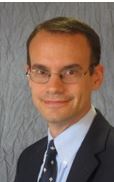
Dr. Michael Tomko
Department of Humanities
College of Liberal Arts and Sciences
USG: John Keats and the Politics of Gothic Beauty
When the ailing poet John Keats’ 1819 letters surveyed Winchester’s medieval cathedral, Roman Catholic Church, and nunnery, he was encountering an unexpected site of national controversy, one which has not yet been integrated into resituating Keats within the politically engaged “Hunt Circle” or “Cockney School” by Nicholas Roe, Jeff Cox, and Greg Kucich. Through the writings and church-building of John Milner, the English Catholic bishop and writer, Winchester’s religious architecture became central to debates over national identity, cultural history, and the shape of romantic-era secularism. This research project will do what the town-scape of Winchester did: namely, put Keats into dialogue with Milner, whose massive history of Winchester Cathedral and experimental construction of the first neo-Gothic church in England were part of a political program to advance Catholic Emancipation—an issue dear to Keats and the Hunt circle. Even though Keats would have suspected Milner’s theology as medieval superstition, the controversial bishop’s reclamation of Gothic beauty resonated with Keats’ own medievalism in “Eve of St Agnes” and the “Eve of St Mark,” as did his challenge to the Anglican establishment. As part of a broader attempt to connect English studies with a range of interdisciplinary concerns involving a religious minority, this project will consider the resulting ambivalent torque over national history in Keats’ late poetry as one of the chief and most complex ways that religious history and art affected the poetry and politics of romantic period.

Dr. Melanie Vile
Department of Geography and the Environment
College of Liberal Arts and Sciences
USG: Do Master Regulators of Methane Fluxes to the Atmosphere Drive Fixation on a Global Scale? Inquiring Minds Want to Know.
Peatlands occupy only 3-4% of the world’s land area, but store 25-30% of the earth’s soil carbon (C) and 9-16% of soil organic nitrogen (N) making them ecologically important ecosystems via their ability to store substantial amounts of both C and N. Nitrogen controls many aspects of ecosystem productivity, e.g., C accumulation, and the cycling of C and N is intrinsically linked. Recently, my team of students, research technicians and I have shown that rates of biological N2-fixation in peatlands have been historically underestimated globally due to methodological constraints, affording us the opportunity to reevaluate this process in a variety of peatlands. Biogeochemical theory predicts that biological N2-fixation should represent the dominant N-input to pristine ecosystems, which my team has documented for ombrotrophic bogs of boreal Alberta, Canada. In northern Alberta Canada, where atmospheric N deposition is exceptionally low (< 2 kg N·ha-1·yr-1), we have shown some of the highest rates of biological N2-fixation found globally (20-45 kg N·ha-1·yr-1) Because rates of biological N2-fixation are in part responsible for high Sphagnum moss productivity and peatlands play and important role as a global C sink, this new information may underscore a paramount role of N2-fixation in peatlands worldwide. With Villanova summer support, I will quantify biological N2-fixation in Sphagnum-dominated peatlands of the Italian Alps, a region where atmospheric N deposition also is low (2-8 kg N·ha-1·yr-1). Findings will inform the question of the universality of the importance of biological N2-fixation to the primary production of Sphagnum in peatlands.
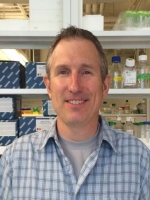
Dr. James Wilson
Department of Biology
College of Liberal Arts and Sciences
USG: YaiV is a Novel Inhibitor of Oxidative Stress Resistance
We have discovered that the bacterial gene yaiV encodes an inhibitory factor that dramatically decreases resistance to oxidative stress in bacteria. Oxidative stress is used by our immune cells to kill invading microbes. Bacteria possess resistance mechanisms to combat this stress which have evolved to be turned on and off with specificity. Most of the known “on/off” regulatory schemes have been found to turn on oxidative stress resistance; very few have been found to turn it off. Moreover, the few known “turn off” schemes involve genes that are very different than yaiV; thus, the yaiV gene is a unique example of a rarely-identified phenomenon in bacteria. The yaiV gene has potential to be used to engineer bacteria to more precisely control oxidative stress resistance for applications such as vaccine design. We propose to purify the YaiV protein, assay its DNA binding activity (since its sequence highly suggests it binds DNA), and test YaiV for catalase-inhibiting activity (catalase is a key antioxidant protein). These studies will be essential in discovering how YaiV functions at a mechanistic level. Overall, this work will explore a newly-identified and novel gene activity in bacteria that can potentially impact microbial engineering and allow design of bacteria for beneficial purposes.

Dr. Wenqing Xu
Department of Civil & Environmental Engineering
College of Engineering
USG: Safe Drinking Water for a Thirsty World: Prevention of the Formation of Disinfection Byproducts (DBPs) using Tailored Activated Carbon
One of the critical challenges facing society in this century is the provision of safe drinking water for our expanding population with diminishing access to pristine drinking water sources. Today, chlorine is added to drinking water as a disinfectant to prevent infectious waterborne disease. The highly reactive nature of chlorine, however, not only inactivates microbes but also promotes the formation of a suite of toxic chemicals during the chlorination process. These chemicals, collectively referred to as disinfection byproducts (DBPs), pose human health concerns due to their potential link with increased rates for bladder cancer, reproductive and developmental effects. Over 600 emerging DBPs have been discovered over the past twenty years. Among them, only 11 DBPs are currently regulated by the US Environmental Protection Agency. Many emerging DBPs, however, are more toxic than regulated ones. In fact, two unregulated DBPs, namely, formaldehyde and N-Nitrosodimethylamine (NDMA), are known human carcinogens. This proposal aims to provide preliminary data for developing an effective yet low-cost strategy to prevent the formation of DBPs in our drinking water. The PI proposes to reduce the formation of regulated DBPs while minimizing emerging DBPs by tailoring surface properties of filter materials through the use of activated carbon. By leveraging the PI’s expertise in material chemistry, the proposed research will investigate the impact of surface properties of activated carbon on removing the precursors of DBPs.

Dr. Elaine Youngman
Department of Biology
College of Liberal Arts and Sciences
USG: Investigating a Role for Small Noncoding RNAs in mRMA Quality Control in the Nematode Chaenorhabditis elegans
Survival of all organisms depends critically on faithful transmission of the genome– the DNA blueprint of life – to the next generation. Transmission of the genetic material requires defense against transposons and other molecular parasites that would damage the genome, and also proper development of the germ cells (sperm and egg) that will ultimately carry the genome. My lab works to understand the genetic factors that control these processes and ensure fertility.
For decades, the study of how genes dictate the function of a cell was governed by the paradigm that genes are transcribed into RNA molecules (much like a photocopy), and those RNA copies are translated into protein molecules that carry out the functional work of the cell. However, we now know that a subset of RNAs (noncoding RNAs) are not just copies that direct production of proteins, but are themselves functional molecules. Two classes of noncoding RNAs (piRNAs and siRNAs) are critical for the development of germ cells and maintenance of fertility in a variety of animals, and mutations that reduce the function of piRNAs are associated with male infertility in humans. The research funded by this grant aims to test the hypothesis (suggested by research in my lab) that in addition to their well-documented role in defense of the genome against transposons, small noncoding RNAs also participate in defense against low-quality RNAs. If true, this would represent the first evidence that control of RNA quality is important for fertility.
